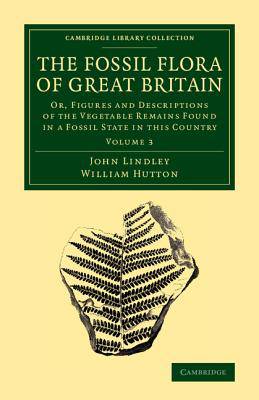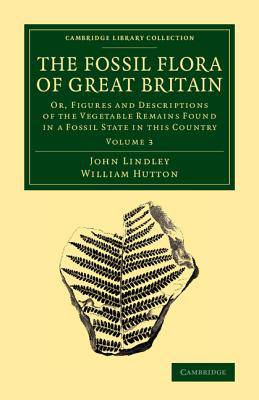
Door een staking bij bpost kan je online bestelling op dit moment iets langer onderweg zijn dan voorzien. Dringend iets nodig? Onze winkels ontvangen jou met open armen!
- Afhalen na 1 uur in een winkel met voorraad
- Gratis thuislevering in België vanaf € 30
- Ruim aanbod met 7 miljoen producten
Door een staking bij bpost kan je online bestelling op dit moment iets langer onderweg zijn dan voorzien. Dringend iets nodig? Onze winkels ontvangen jou met open armen!
- Afhalen na 1 uur in een winkel met voorraad
- Gratis thuislevering in België vanaf € 30
- Ruim aanbod met 7 miljoen producten
Zoeken
The Fossil Flora of Great Britain
Or, Figures and Descriptions of the Vegetable Remains Found in a Fossil State in This Country
John Lindley, William Hutton
€ 67,95
+ 135 punten
Uitvoering
Omschrijving
Employed early on in his career by Sir Joseph Banks, the botanist John Lindley (1799-1865) went on to conduct important research on the orchid family and also recommended that Kew Gardens should become a national botanical institution. This pioneering three-volume work of palaeobotany, first published between 1831 and 1837, catalogues almost 300 species of fossil plants from the Pleistocene to the Carboniferous period. The geologist and palaeontologist William Hutton (1797-1860), with whom Lindley collaborated, was responsible for collecting the fossil specimens from which the 230 plates were drawn. The first serious attempt at organising and interpreting the evidence of Britain's primeval plant life, this resource is notable also for its prefatory discussion of topics such as coal seams and prehistoric climate. Volume 3 includes a note on the action of water on plants. This is followed by the descriptions of plates 157-230.
Specificaties
Betrokkenen
- Auteur(s):
- Uitgeverij:
Inhoud
- Aantal bladzijden:
- 284
- Taal:
- Engels
- Reeks:
Eigenschappen
- Productcode (EAN):
- 9781108068567
- Verschijningsdatum:
- 13/02/2014
- Uitvoering:
- Paperback
- Formaat:
- Trade paperback (VS)
- Afmetingen:
- 140 mm x 216 mm
- Gewicht:
- 362 g

Alleen bij Standaard Boekhandel
+ 135 punten op je klantenkaart van Standaard Boekhandel
Beoordelingen
We publiceren alleen reviews die voldoen aan de voorwaarden voor reviews. Bekijk onze voorwaarden voor reviews.











